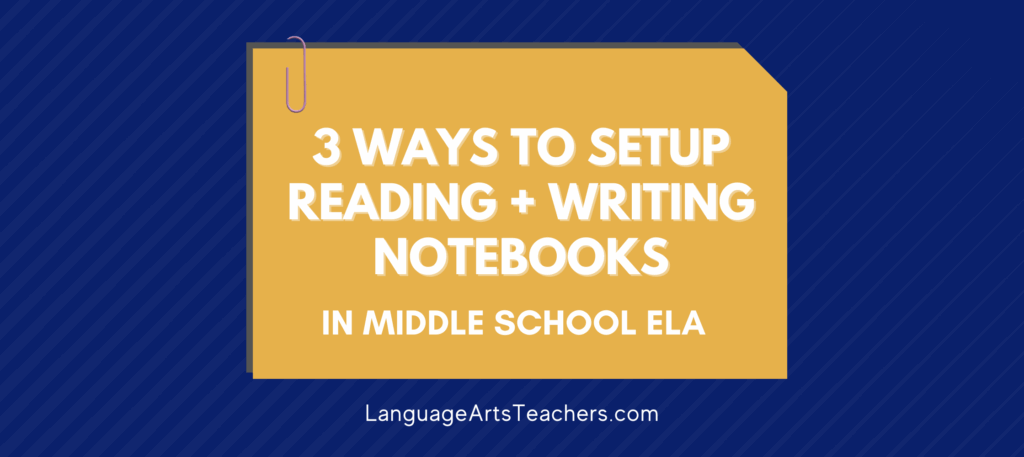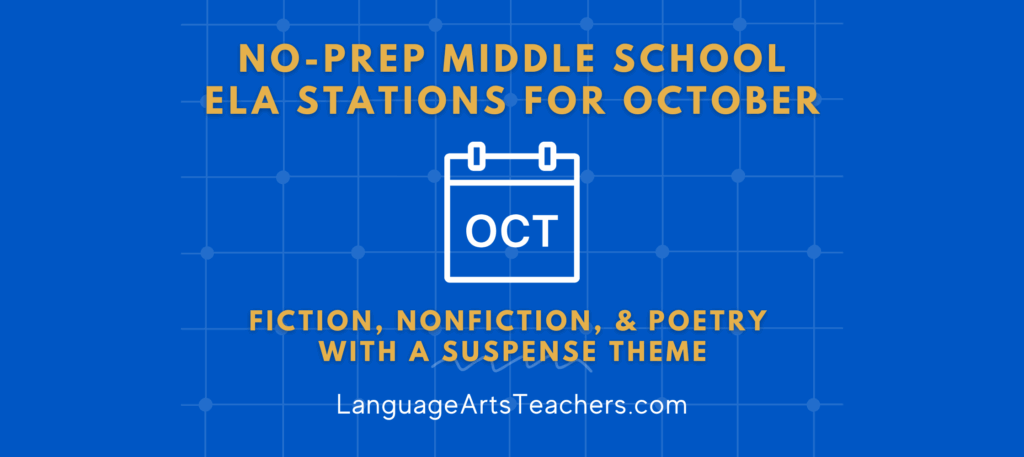Flipping your instruction (in case you’re new to the concept) is where students are introduced to material through videos or other digital content on their own time, usually outside of class (but I’ll show you other methods, too).
The idea is that instead of the teacher teaching a concept in class and then having students practice on their own at home, the flipped instruction model has students viewing the concept at home (typically a video the teacher provides) and then they come to class and put the new content into practice.
It sounds good, right?
Imagine recording a video of yourself teaching compound / complex sentence structure and your students watching it at home. That’s their homework. They arrive in class the next day and now they get to practice writing and analyzing the compound-complex sentence structure with you right there to offer support, feedback, and to keep them on the right path. They’re doing their “homework” with you in class, rather than struggling at home and potentially doing it all incorrectly anyway (or not at all).
That’s the basic gist of flipped classroom instruction. It’s supposed to increase engagement, put the initial learning in the hands of the students so they can go at their own pace, and allows the teacher to work more deeply in class with those who need extra help or with those who are ready for the next level.
When it comes to flipping your class in order to maximize student engagement while differentiating for everyone’s learning needs, it’s easy to feel overwhelmed and confused with all the moving pieces you *think* you have to organize in the background first.
Thoughts like I need to make a bunch of videos so students can view them at home while I work with them on practice assignments in class quickly results in problems around who has internet access at home and who can actually sit down and learn at home (many students can’t).
Thoughts like If I could just figure out a way to make or piece together different levels of teaching materials so everyone gets what they need also results in issues around where exactly to find these dream resources, how to organize them, and how to keep track of who’s learning what (not to mention all the grading).
If flipping your classroom sounds like a pipe dream full of secrets that those genius, creative, superhuman teachers who never sleep somehow figured out, well, that’s how most of us feel about it (But hang on—it does NOT need to be this way, and I’ll show you how to make it so easy and freeing!)
A flipped classroom approach seems amazing at first glance, but when a teacher starts down that rabbit hole of making it work, it really is overwhelming if they don’t have resources or if they don’t know where to start!
It is, however, 100% doable, reasonable, and realistic to think about only flipping ONE (yes, just one) aspect of your classroom.
For an English Language Arts teacher, we actually have the best setup for doing exactly that–flipping instruction for one piece of content while we keep everything else the same.
Here’s the easiest, no-prep, less-than-five-minutes method to flip your classroom instruction:
Step (1)
The one thing to flip first. Don’t try to flip vocabulary, grammar, reading, writing, etc. Instead, pick one of those to flip. I recommend flipping your grammar instruction first! Everything else that you do in how you teach reading, writing, and vocabulary–keep that the same. No gigantic overhaul needed when you’re first looking to experiment with flipped instruction. Flip your grammar first because I’m recommending an absolutely fantastic, easy, and free way to do this that requires virtually zero prep or time on your part.
Step (2)
Grab the 30 day free trial of GrammarFlip. You get total access to everything inside the user-friendly, intuitive platform so you can literally click a button or toggle a switch on the screen to assign lessons. You can assign a brief (15 – 20 minute) diagnostic assessment to get a sense of what each student needs, and then assign lessons for them from there. Lessons include concepts like parts of speech, mechanics/usage, and sentence structure. GrammarFlip even includes built-in writing application practice as well!
Step (3)
Simple, intuitive setup for busy, tired teachers. You can get set up with GrammarFlip in less than five minutes. All you do is click here and enter your name, your email, and make up a password. No payment info is needed for your 30 day trial. That’s it! And if you have Google classroom, you click one button to import all your students. If you don’t have Google classroom, it’s still very quick and simple to use because you’ll get a classroom code that your students enter on their own and voila! That’s it.
Step (4)
Only have maybe 5 – 10 minutes? Perfect. Since teachers already have zero time to add new material to their class, let GrammarFlip take the grammar content off your shoulders. The student lessons are very brief so kids stay engaged. Even if you only have 5 – 10 minutes a few times a week, GrammarFlip will allow you to provide consistent, quick, and engaging grammar instruction for your students with instant feedback, too!
(Step 5)
Assessing the data. The best part about GrammarFlip for the teacher is that the platform also tracks student progress so you can see who needs what next, and then you simply click a button to assign more practice on that skill or you can assign a new skill. There is no complicated data sheet, either. GrammarFlip provides a very visual “at a glance” assessment of how your students are doing so there’s not an overwhelming, complicated amount of data to agonize over. You’ll never have to choose between that much-needed bathroom break and analyzing your students’ GrammarFlip progress because it’s already laid out so neatly!
The main source of overwhelm for teachers who are trying to flip their classrooms comes from not having the right resources at their fingertips, not feeling able to keep up with all the students working at all their own paces, and then grading or assessing the work so they can either continue to practice or move on to the next skill level.
With GrammarFlip, the concept of a flipped classroom is done for you and is already set up so you can:
✅ access hundreds of lessons to quickly assign as needed
✅ glance at the assessment data which is automatically tracked
✅ maintain consistent and engaging grammar instruction in class
✅ teach with confidence knowing grammar requirements are met
Another tip about flipping your instruction with GrammarFlip is that for students who don’t have access to a place to learn outside the classroom, or who don’t have reliable internet, you can still flip your classroom! Flipping your instruction doesn’t mean you must have students view the videos outside of class and then only work on practice inside of class. Flipping your instruction–especially your grammar instruction with GrammarFlip–means that students learn at their own pace, where and when they can.
A flipped classroom using GrammarFlip can look like any of these scenarios:
🎉 Students who finish other work early can jump right into their GrammarFlip portal
🎉 Students without home internet can move through GrammarFlip in class, whether it’s videos or practice or both
🎉 Students who work faster or who don’t need foundational grammar work can work ahead as needed while skipping parts they don’t need
🎉 Students can access GrammarFlip inside or outside of class as often as they wish (or based on your own requirements)
🎉 Students can use GrammarFlip as a bell ringer where they log in and work for the first few minutes of class, still going at their own pace
Ok, so that’s my warm invitation to you:
>> Grab your 100% free, all-access GrammarFlip trial
>> Take maybe 10 minutes each class to flip your grammar instruction




